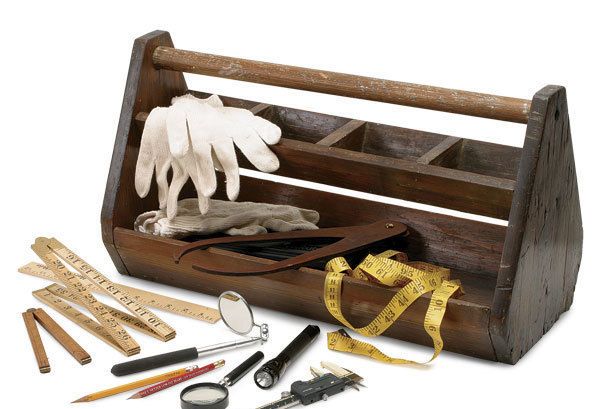Copying Museum Pieces
Bring the right tools, enter with respect, and go home with accurate plans.
Synopsis: The plans you’ve been seeking for that reproduction case clock or period sideboard may be as close as the local historical society museum, and they’re yours for the taking if you play your cards right. Furniture maker George Walker guides readers through the steps to take before attempting to measure and sketch of a museum piece — how to lay the groundwork with museum staff, how to research the history of a piece, the best time to ask permission, the items needed for a basic measuring kit, the dos and don’ts of taking photos in a museum, how to sketch the piece, and what notations must be made in order to end up with accurate drawings once you’ve left the museum and are at work in your shop.
It’s not uncommon for a small town to have a local museum or historic home that’s open to the public. Visitors to these places often find wonderful furniture pieces on display, sometimes dating back to the Colonial and Early American periods, with remarkable regional pieces as well. And, I’ve discovered, some museums will let you do more than look. Not too long ago, I received permission to take measurements from a tall case clock in the collection at the historic Spring Hill home in Massillon, Ohio (www.massillonproud.com/springhill).
Before heading pell-mell to the nearest museum, it’s a good idea to do some groundwork. A little preliminary effort pays dividends when it’s time to take measurements.
First, get permission from the museum
The first item of business is to contact the museum and request permission to measure the piece that has caught your eye. I find it best to approach the process like a job interview. If you don’t know anyone at the museum, try to tour the building when visitor traffic is low. You’re more likely to find someone with time to talk.
You might want to bring photos of your work to show to the museum staff. It lets them know that you are a serious woodworker. In the course of your discussion, make sure your enthusiasm for the museum collection comes across. Be patient. Listen to their concerns, and be willing to work within the museum’s framework of rules and regulations. For example, they might want an agreement that says you won’t make the piece commercially.
The answer to your request for permission can run the gamut from a simple “yes,” to “take 20 minutes right now,” to “we need to wait for approval from the board of directors,” to a polite “no.” Don’t be offended if you are denied permission. Many of these antiques are valuable, and some museums simply don’t want to risk damage to an important piece in their collection.
If you get an OK, be ready to go to work, especially if you get the “… right now” response. Basic research and preparation can help you make the most of your opportunity.
Preparation is the key to getting detailed plans
In the best-case scenario, you have found an interesting piece and you can arrange to come back to the museum later to take measurements. Before returning, do some preliminary research and find out what kind of joints typically were used on such a piece when it was made. The research information you collect might help you determine the joinery and speed the process. For example, the notes you record on one dovetailed drawer can apply to all the drawers in a chest.
From Fine Woodworking #186
For the full article, download the PDF below:
Fine Woodworking Recommended Products

Dividers

Dubuque Clamp Works Bar Clamps - 4 pack

Bessey EKH Trigger Clamps






















Log in or create an account to post a comment.
Sign up Log in